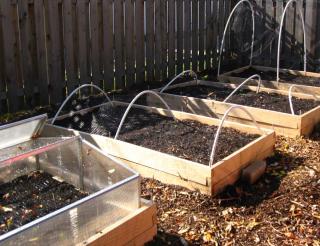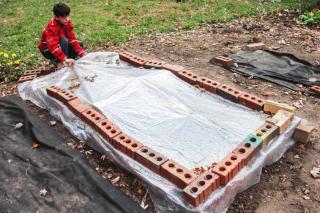

Covered sowing is for all the seedlings prepared before April. Indeed, it would be too early to sow outdoors and your plants would risk freezing…
so sowing under cover is the key!
Types of cover include greenhouses, sheets of plastic, panes of glass, cold frames, garden cloches…
A simple thermometer in the shaded corner will tell you if you need to insulate more at night or open and ventilate on hot days.
The goal is to keep temperatures warm inside the covered area, while letting as much light in as can be.
These use the greenhouse effect to lock heat in from the sun’s rays.
 Sides can be either glass, plastic, wood… Even hollow blocks or bricks are great.
Sides can be either glass, plastic, wood… Even hollow blocks or bricks are great.Clear or translucent plastic boxes are also excellent. Their lid is already the perfect size and they’re lightweight and easy to move around.
Try to slant the top of the greenhouse so that the surface faces towards the midday sun. This maximizes light intake.
Along the sides, insulation really helps keep heat in.
Even though it’s a hassle, on cold nights, keep a slab of insulation to cover the mini-greenhouse over. Pull it off in the morning. A tarpaulin, for instance, can do the trick, especially if it’s lined with bubble wrap.
The shelter should be easy to open and close. Indeed, on very warm days, temperatures might rise too much. Seedlings might get roasted! In that case, simply opening the shelter a crack can let excess heat float away.
 Sowing under cover lets plants start about a month before they would naturally if sown outdoors in the plot.
Sowing under cover lets plants start about a month before they would naturally if sown outdoors in the plot.
By the time non-covered seeds sprout naturally, it’s ok to open the cover all the time and start moving your seedlings out. At this time, here are a few notes on how to transplant them.
Covered seedlings, to grow perfectly healthy, need lots of light! If you can add supplemental lighting, give them 12 hours a day.